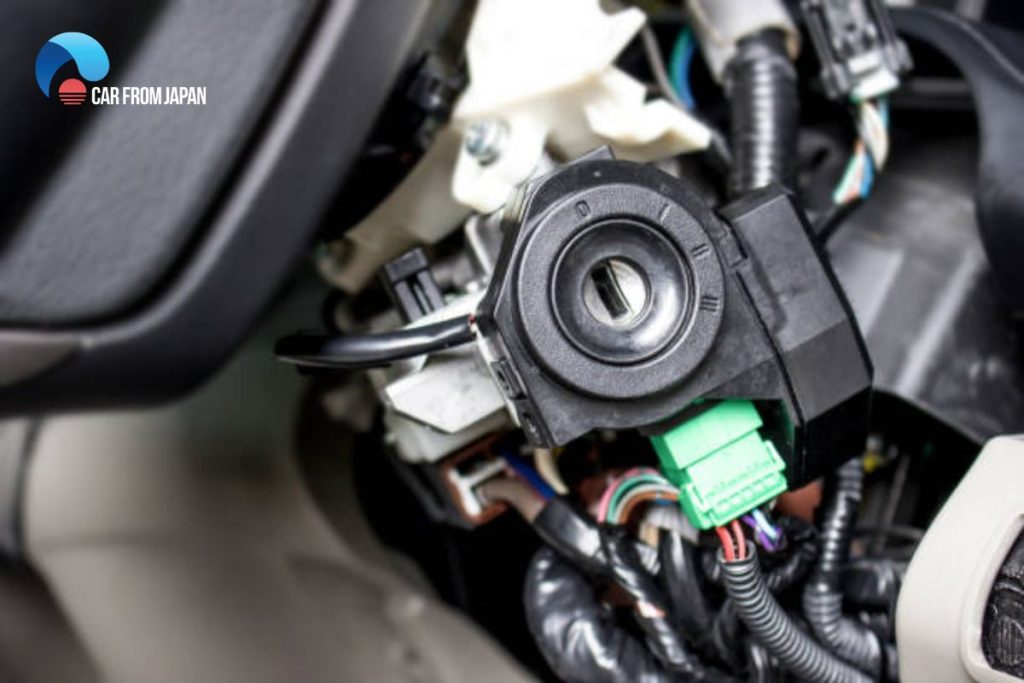Your car’s ignition switch is more than just a place to put your key; it’s the command center for your vehicle’s electrical system. When it starts to fail, you might experience a range of strange problems, from the car not starting to accessories not working correctly. Before assuming a more complex issue, learn how to test ignition switch; it’s a smart diagnostic step. We’ll explore how to check this crucial part to determine if it needs attention.
Symptoms Of A Failing Ignition Switch
The ignition switch is an essential part of keeping your vehicle on the road. It has an important role in activating the main electrical of the car. Without a working ignition switch, you might notice your car not starting or your car radio not working. Know about the symptoms before jumping to the conclusion that you need to replace the component or learn how to test ignition switch. A faulty switch will show these signs to warn about a potential issue.
Sudden halt of the vehicle
It is the primary sign that the ignition key is failing. If the failure occurs when the engine is running, it may cut the power to the ignition and fuel system, resulting in the stalling of the car.
Car stalls after starting
It happens when the switch fails in the ‘ON’ position. It may supply power to the fuel and ignition systems when the engine is cranking but stops functioning immediately after. Additionally, a failing ignition switch can cause the engine to stall while driving, which can be dangerous, especially if it happens at high speeds.
Trouble powering up the accessories
Turning the key to the ‘acc’ position is likely to power up the accessories. When it does not happen, there must be a problem with it. When the ignition switch goes bad, it may not be able to provide power to accessories such as the radio, power windows, or air conditioning.
Difficulty starting the engine
One of the most common symptoms of a failing ignition switch is difficulty starting the engine. You may have to turn the key multiple times or wiggle it around to get the engine to start.
Electrical problems
A failing ignition switch can cause electrical problems in your vehicle. You may experience issues with the headlights, dashboard lights, or other electrical components.
Key stuck in the ignition

Another symptom of a failing ignition switch is the key getting stuck in the ignition. This can happen when the switch fails to release the key after starting the engine.
If you are experiencing any of these symptoms, it is important to have your vehicle inspected by a qualified mechanic to diagnose and repair the issue. Ignoring a failing ignition switch can lead to more serious problems down the road.
How To Test Ignition Switch: The Procedure
The function of this component is to provide voltage to the ignition control module and ignition coil. The ignition system has two wires attached to the switch’s run terminal. One goes into the module and the other establishes a connection to the primary resistor and coil. The switch’s start terminal also has a wired connection to the module.
To examine the ignition switch, you have to remove it from its slot and check the resistance and continuity all along the terminals. Before the removal, it is necessary to examine whether the connections to the switch are working.
You can check the voltage of the switch by using two tools – a 12-volt test light or a digital multimeter.
How to test ignition switch with a test light
Step 1: Disconnect the module’s wire connector after turning the ignition switch off. Also, disengage the starter solenoid’s S terminal. Doing so will stop the engine from cranking despite turning the ignition key to the run position.
Step 2: Rotate the ignition key and place it in the run position. Probe the red wire connection to test the voltage. Do the same at the ignition coil’s battery terminal.
Step 3: Then, rotate the switch to the start position and probe the module’s white wire connector and ignition coil’s battery terminal to examine the voltage.
The circuit and the switch are faulty if there is not voltage.
How to test ignition switch with multimeter

Turn the ignition key to the off position. Use the positive lead of the multimeter to back-probe the module’s power feed wire. The negative lead should go into the distributor base’s good ground.
Now the key has to go to the run position and you have to measure the voltage with the meter. Anything less than 90% of the battery voltage indicates trouble with the ignition system.
Or you can follow the steps below:
- Set your multimeter to the resistance or continuity mode. This will allow you to measure the electrical continuity of the switch.
- Locate the ignition switch in your vehicle. It is usually located on the steering column or dashboard.
- Disconnect the electrical connector from the ignition switch. This will prevent any other electrical systems from interfering with your test.
- Place one multimeter lead on one of the switch terminals and the other lead on the other terminal.
- Turn the ignition key to the “ON” position. If the switch is functioning properly, the multimeter should show a reading of zero ohms or beep to indicate continuity. If the switch is faulty, the multimeter will show an infinite reading, indicating an open circuit.
- Repeat the test with the ignition key in the “OFF” position. The multimeter should show an infinite reading or no continuity. If it shows continuity in the “OFF” position, the switch may be faulty.
- Finally, test the switch while turning the key. The multimeter should show continuity when the key is in the “ON” or “START” positions, and no continuity in the “OFF” position.
FAQs
Where is the ignition switch located?
The ignition switch is typically located on the steering column where you insert your key, or on the dashboard/center console if your car has a push-button start system. For key-operated systems, the part you turn is the ignition lock cylinder, and the actual electrical switch is often mounted behind it or connected by a rod.
How do you know when to change your ignition switch?
You should consider changing your ignition switch if your car has starting problems(like no crank, or it cranks but won’t fire up), accessories act erratically(flickering, not working), the key is difficult to turn, or the engine unexpectedly stalls while driving.
Can you start a car with a bad ignition switch?
Usually no. If the bad switch prevents power from reaching the starter or essential engine systems (like fuel and ignition), the car won’t start. However, an intermittently failing switch might sometimes allow it to start, or it might crank without actually firing up.



